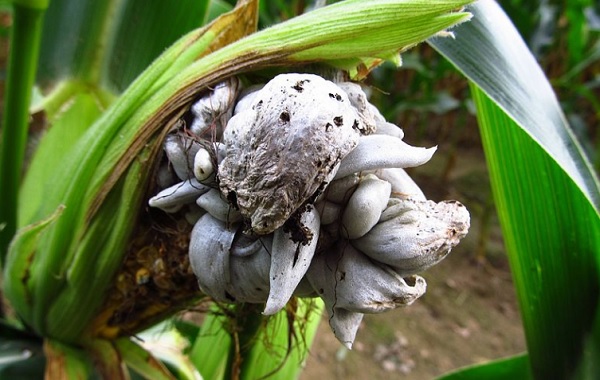SAN MIGUEL DE ALLENDE, Mexico — “This is what I’m looking for!” Chef Victor Martinez said, rushing over to a stall at the traditional food market in San Miguel de Allende, Mexico. “We call it the Mexican truffle.” He reached for one of the ugliest pieces of food we’d ever seen: a wildly deformed cob of corn, with bumpy, irregularly shaped, bulbous growths, tainted a sooty blue-gray.
“Corn smut,” Martinez whispered with reverence. “Huitlacoche.”
Wee-ta-koh-chee?
That’s the Mexican name for the fungus-infected ear of corn, Martinez explained. In the United States, farmers have been trying to eradicate the disease for years. But here in Mexico, it’s a sought-after culinary delicacy. Martinez selected and paid for three of the uglier clusters of corn smut, along with a handful of sweet, apricot-smelling pink oyster mushrooms.
Some sources say the etymology comes from the Nahuatl words cuitlatl (“excrement” or “rear-end”, actually meaning “excrescence”) and cochi (cochi = “to sleep”), thus giving a combined mismeaning of “sleeping/hibernating excrement”, but actually meaning “sleeping excrescence”, referring to the fact that the fungus grows in between the corns and impedes them from developing, thus they remain “sleeping”.
A second group of sources deem the word to mean “raven’s excrement.

Huitlacoche, pronounced weet-la-COH – cheh, is a fungus that grows on ears of corn. It is also known as cuitlacoche, corn smut, and Mexican truffle. It is a plant disease that causes smut–multicellular fungi with many spores–to grow on maize and is a delicacy in Mexico. (Google)
Click here for full article on the Boston Globe
Source: Boston Globe
